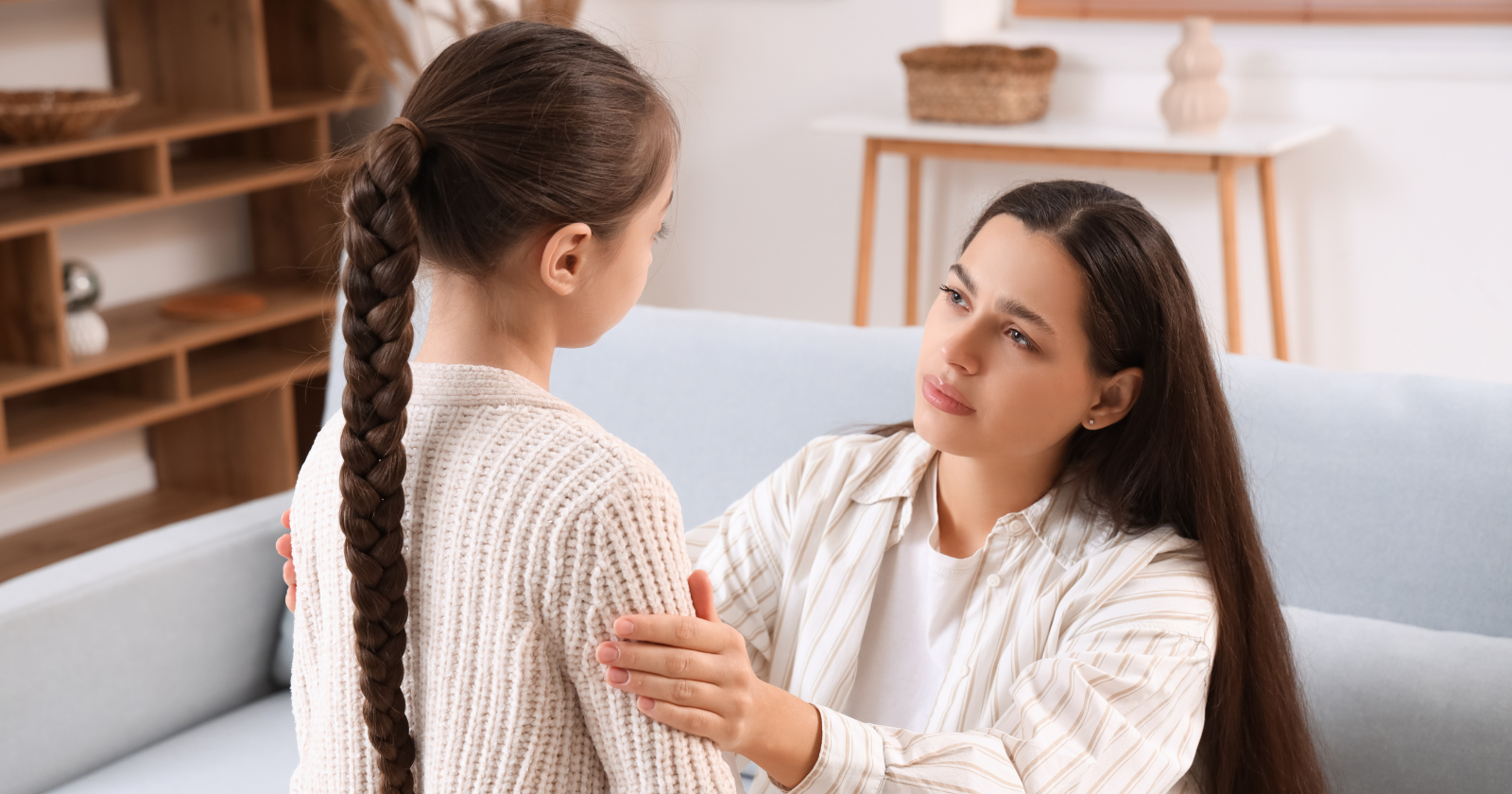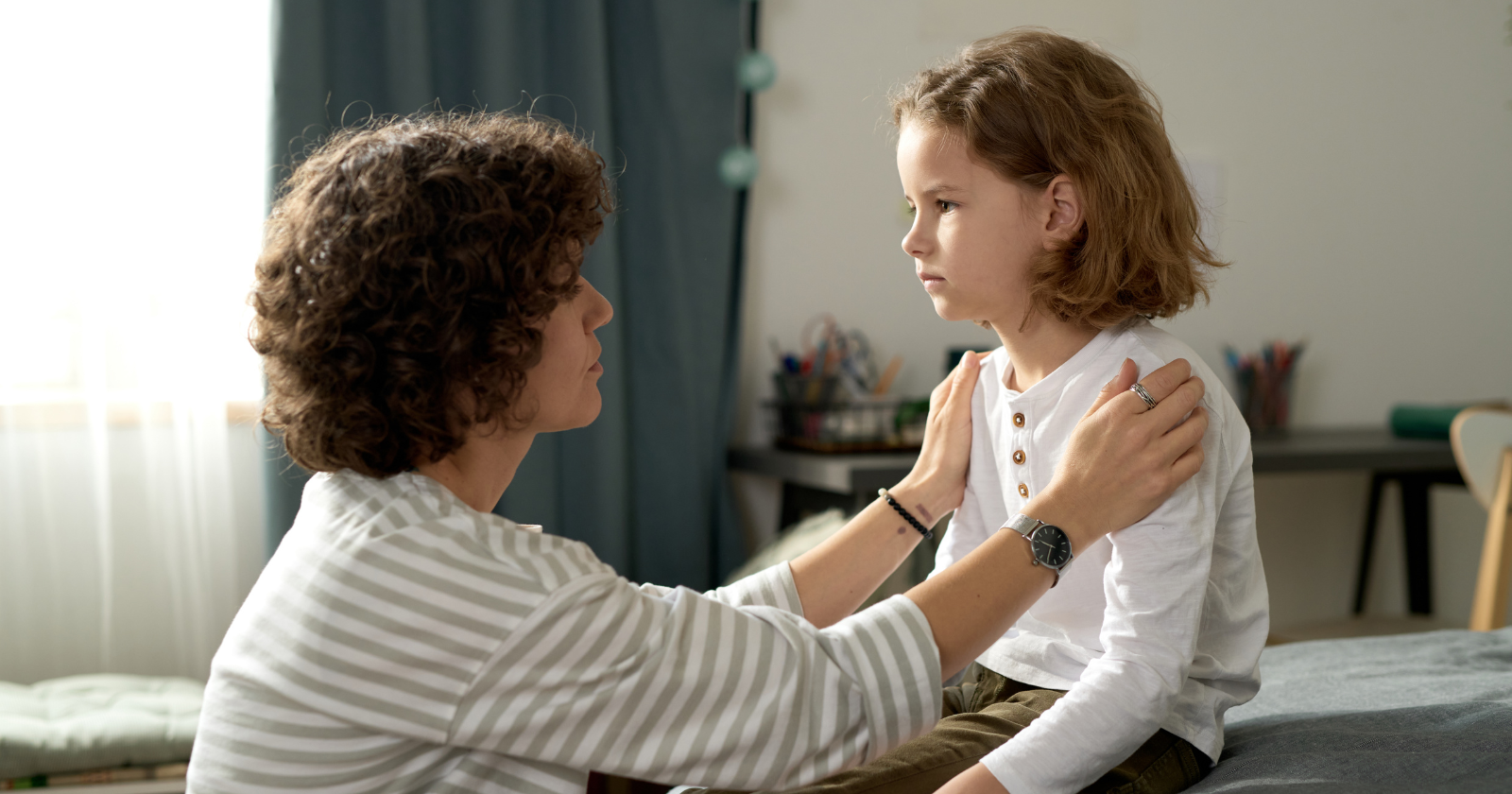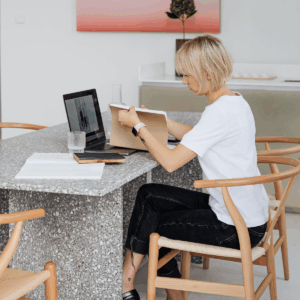Kids can smell a lecture from two rooms away.
The minute our voice tilts into “speech mode,” their brains go elsewhere (mine, too).
However, what sticks is the story, a question, and a moment of being on the same team.
I’ve bumped into plenty of walls figuring this out with my two—Ellie and Milo—as we lean natural and low-tox, play outside more than we scroll, and keep things flexible because real life is messy.
Here are five ways I pass on what I’ve learned without eye-rolls, power struggles, or me making it all about me:
1) Lead with a story, not a sermon
If I start with “When I was your age,” Ellie tenses up but a tiny, honest story pulls her in.
She came home crushed after a friend called her bossy.
Instead of advice, I told her about my doomed second-grade leaf-collecting club—how I barked orders, everyone quit, and I learned that inviting is different from directing.
I ended with, “What could I have done differently?” She said, “Let them pick some leaves.”
Her idea, no lecture.
Keep stories short and specific—one minute, tops.
Related Stories from The Artful Parent
As Brené Brown reminds us, “Clear is kind.”
A clear, human story beats ten minutes of tips.
2) Ask before I advise
“Do you want ideas or just a listener?”
That little question saves so many moments.
Sometimes Ellie wants cocoa and a hug, sometimes she wants role-play practice, and sometimes Milo just needs to be held like a koala.
If they choose “just listen,” I reflect feelings: “Sounds like you felt left out.”
- 6 subtle behaviors that reveal someone’s true character within minutes - Global English Editing
- Psychology says you can tell someone is deeply self-absorbed if they say these 7 things in casual conversation - Global English Editing
- People who age gracefully after 60 usually avoid these 9 common mistakes - Global English Editing
If they pick “ideas,” I offer options, not orders: “Want to write what you might say?” or “Want to try it with me first?”
Curiosity protects dignity.
Advice lands like a gift when it’s invited.
Try a menu of support—ears, brainstorm, practice, or move-your-body time (stirring soup, watering the garden, a quick walk).
Let your children pick for you.
3) Share the feeling, not the fear

Fear makes me say “No!” faster than I can breathe, but when fear leads, kids hear “The world is too big for you.”
When feeling leads, they hear “You’re capable, and I’m here.”
At the park, Ellie eyed a high branch.
While hearing the sirens in my head, I said, “I feel nervous watching you up there because I love you.”
Then I pivoted to skill: “Show me your plan to climb down—three points of contact.”
She showed me, we set a “pause” word, and she climbed with care.
Honesty plus a skill beats a shutdown.
At bedtime, we don’t erase emotions; we check facts with a flashlight and breathe together.
“Do the best you can until you know better. Then when you know better, do better,” Maya Angelou said.
Naming my feeling and teaching a tool is my “know better.”
4) Offer do-overs and tiny tools
Nothing ends listening faster than feeling trapped.
Do-overs unlock the door.
If Ellie uses a sharp tone, I’ll ask, “Want a do-over?”
She almost always takes it.; we practice, cheer the attempt, and move on.
Mistakes become reps, not verdicts.
We also lean on tiny tools:
- Two-beat pause: Two slow breaths before we answer. Milo learned it as “smell the flower, blow the candle.”
- The sandwich: Warmth—need—warmth: “I want to play; I need the blocks to stay; want to help me rebuild?”
- Choices card: A sticky note by the art shelf: “Watercolor or crayons? Porch or table? Ten or fifteen minutes?”
- Natural helper: Give a purposeful job—garlic to smash in a bag, socks to pair. Purpose calms chaos.
Repair is our family ritual.
If I snap, I circle back: “I’m sorry I used a harsh voice. I felt overwhelmed. Here’s my calmer try.”
That teaches change better than any speech.
5) Model values in motion, not in marble
Kids watch our feet more than our mouths.
If I preach “screens last” but scroll at every red light, the message is muddled.
I show the value, imperfectly and out loud.
We prioritize organic, but frozen peas and pancakes happen; we bless the peas.
We love co-sleeping, but if no one’s sleeping then we pivot.
Low-tox matters—and so does laughing when the sourdough overflows.
When I share past mistakes—like people-pleasing—I don’t chisel commandments.
I narrate practice: “I used to say yes to everything and feel resentful, but now I check my body. Tight chest means no for now, but a warm belly means yes.”
Then I ask Ellie, “Where do you feel your yes or no?”
She pokes her tummy and grins.
No lecture—just a map.
As Alfie Kohn puts it, “Kids learn to make good decisions by making decisions, not by following directions.”
I leave space for them to choose, even when it’s messy.
Closing thoughts
If you’ve been a lecturer, you haven’t ruined anything because you tried what you knew.
Now, you know something different so that the next time your child brings you their messy, marvelous heart, try one:
- Tell a one-minute story and end with a question.
- Ask if they want ears or ideas.
- Name your feeling, then teach a skill.
- Offer a do-over and a tiny tool.
- Let your feet show the value.
We’ll still mess up, but we’ll repair, breathe, and get outside; fresh air and simple play have a way of resetting everyone.
Little by little, our kids absorb the lesson we meant all along: You are loved, you are capable, and you don’t need a lecture to know it.



